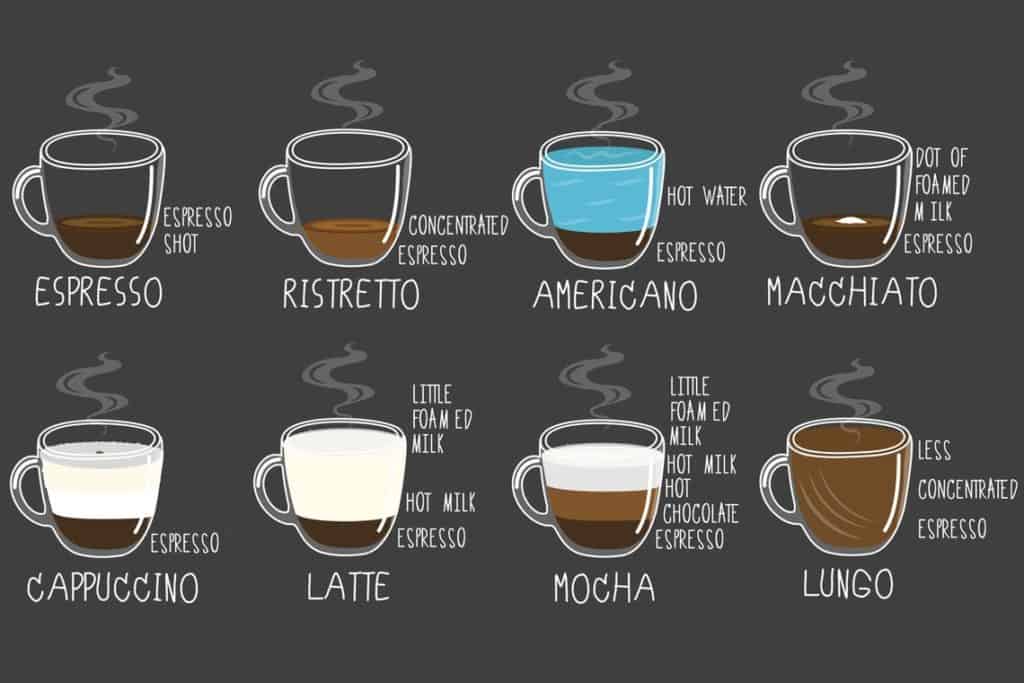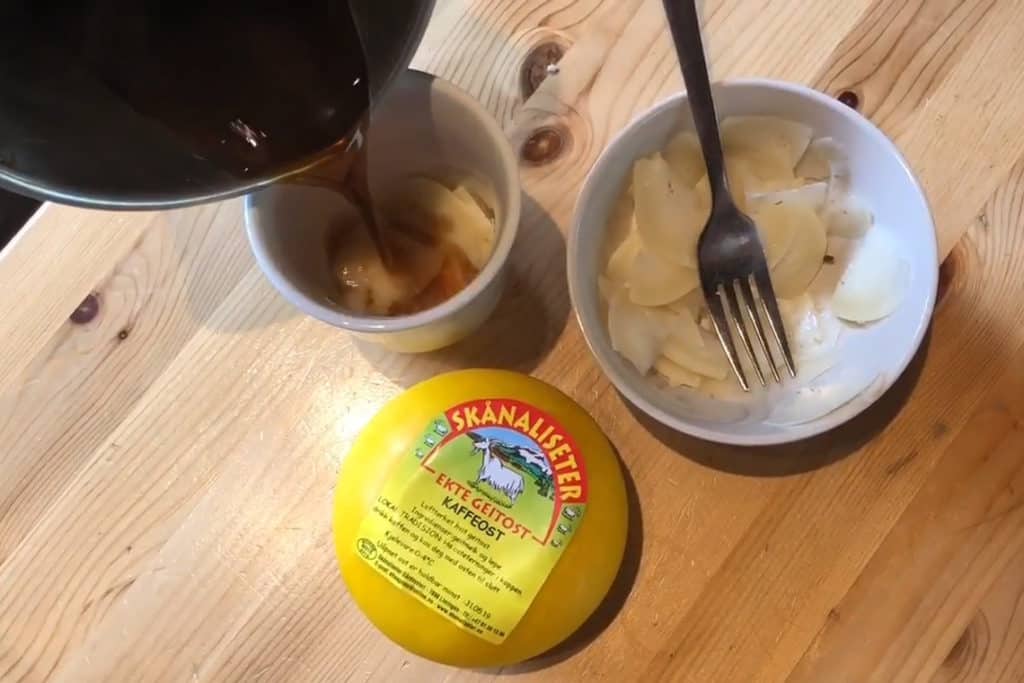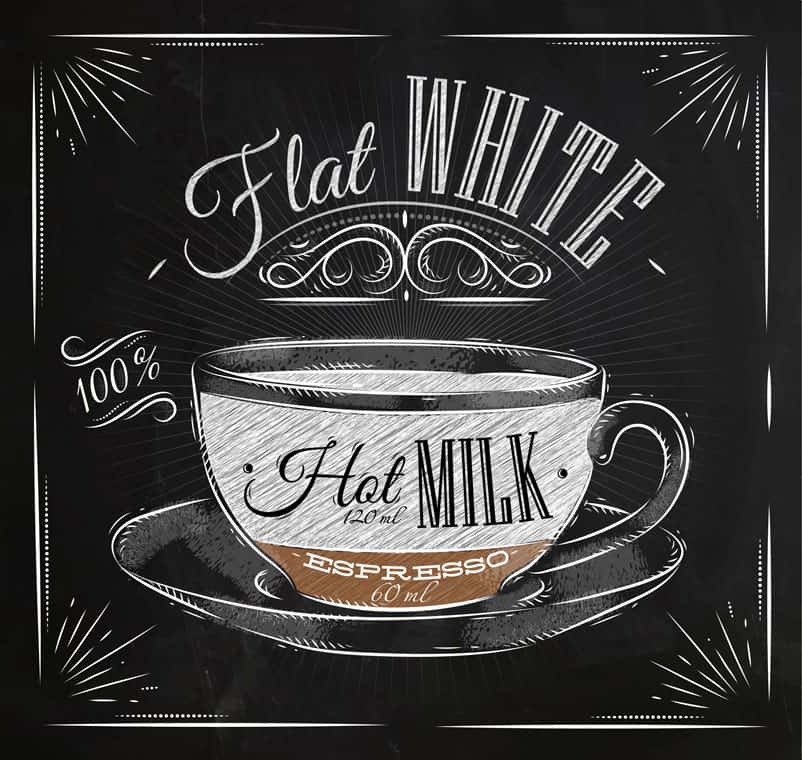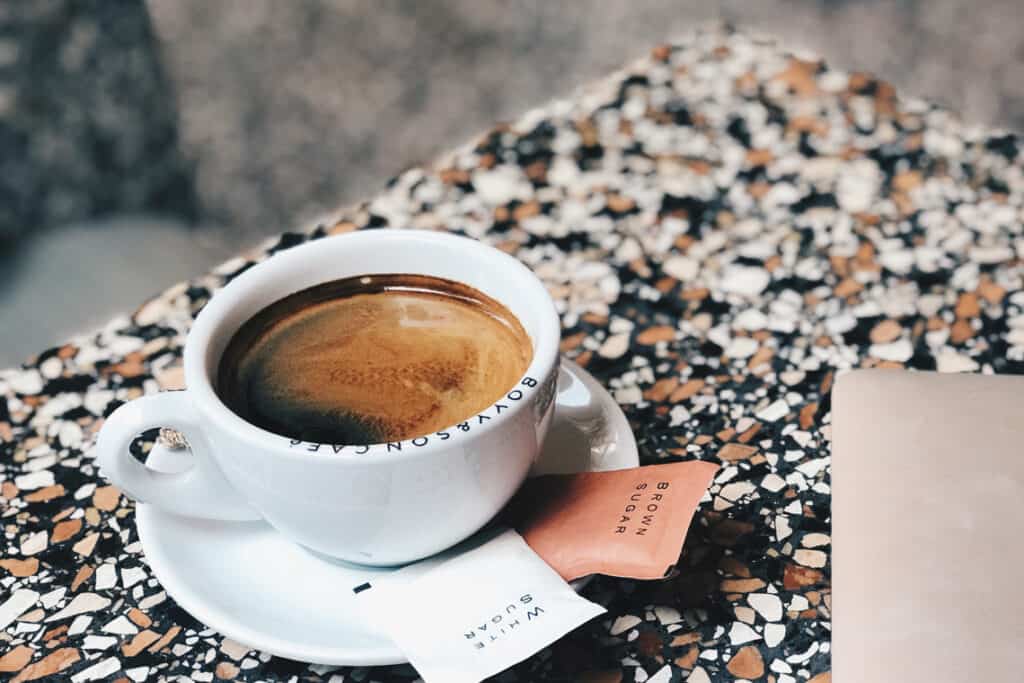One of the most common mistakes when making coffee at home is using the wrong amount of coffee beans, which results in coffee that is either too weak or too strong. Fortunately, this is a problem that’s very easy to fix… provided we can agree on what we mean by “a cup” and which units we’re going to use (coffee scoops? tablespoons? grams? ounces?) to measure the amount of ground coffee.
Measuring your coffee beans is essential for two main reasons: to make your drink taste good, of course, and to make it consistent so that it always has the strength you prefer.
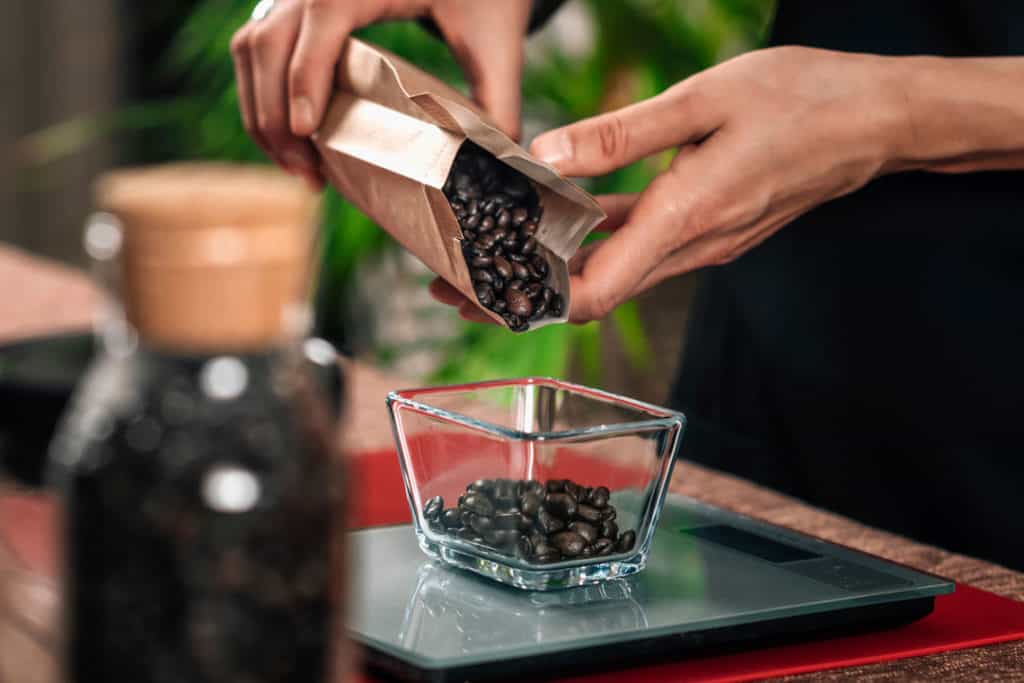
In this post, we’ll talk about how to measure coffee with and without a scale, what is and who defines a standard brew strength, and the importance of knowing that not all cups are the same size. We’ll also provide a calculator to find the correct amount of coffee beans for any number of coffee servings.
Who decides how strong should my coffee be?
While there’s no objective best ratio of coffee to water, there is a range that most people agree on as the ‘sweet spot’. Technically, we call this the Golden Cup Standard and it’s defined by the Specialty Coffee Association in terms of brew strength, that is how much dissolved coffee solids should be present in a specified amount of brewed coffee. In order to achieve this standard brew strength, they recommend a coffee-to-water ratio of 55 G/L ±10%, and a water temperature of 200°F ± 5° (93.0°C ± 3°).
Let me translate this to something easier to understand:
To make a standard cup of coffee use 5 to 6 grams of ground coffee for every 100 ml. of water and make sure that the water is close to 93.0°C (200°F).
But what if you want to measure your water in cups instead of mililiters?
While doing research for writing this post, I was surprised to find that “a cup” is not really a standard measurement, and its real-life value varies quite a lot, even among different coffee equipment manufacturers.
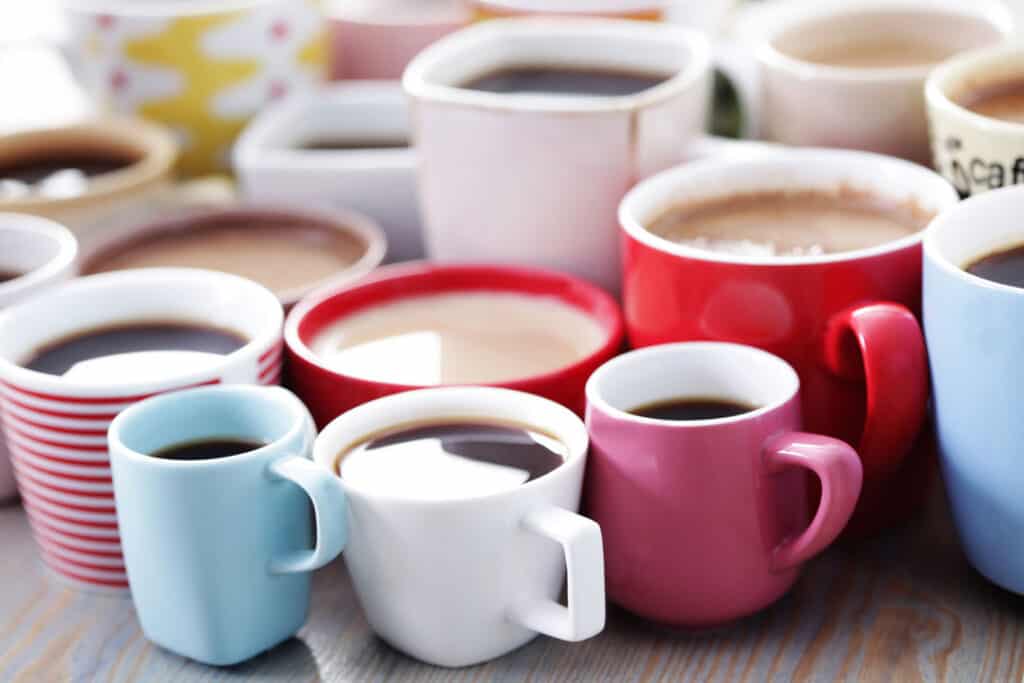
You will understand now that before we continue, we need to answer the following question:
How many ounces (or mililiters) are there in a cup?
According to Google, one U.S. cup equals 8 fluid ounces (237 ml). But if you’re making coffee, a cup IS NOT defined as 8 ounces, no matter where you are.
To verify this myself, I checked the capacity of my cheap Braun drip coffeemaker. One cup, as marked in my carafe, measures 5.4 fl. oz (160 ml). That’s considerably less than the US cup of 8 oz. On the other hand, Wikipedia says that a “customary cup of coffee” in the US is usually 4 fl.oz (118 mL).
If you verify what different manufacturers of coffee equipment consider to be “a cup”, as marked in the coffee carafes that they sell, you will find that a coffee cup measures somewhere between 4 and 6 ounces (118 to 177ml).
Am I the only one who thinks this is confusing? Thankfully, there is a very effective and simple solution: use a scale. Measure your coffee and water by grams and you will always come up with a good cup ― no matter how many ounces it translates to.
But, did I just tell you to measure your water in grams? That may sound weird, but remember that one milliliter of water weighs one gram. In other words, when we’re talking about water, grams and milliliters are the same thing. You can confidently measure your water by volume, using for example measuring cups, or by weight, using a scale.
But, I don’t have or don’t want to use a scale for making coffee.
Ok, I hear you. Scales are recommended but not indispensable for the enjoyment of your morning coffee. So, now I’m going to tell you how to measure your coffee without a scale.
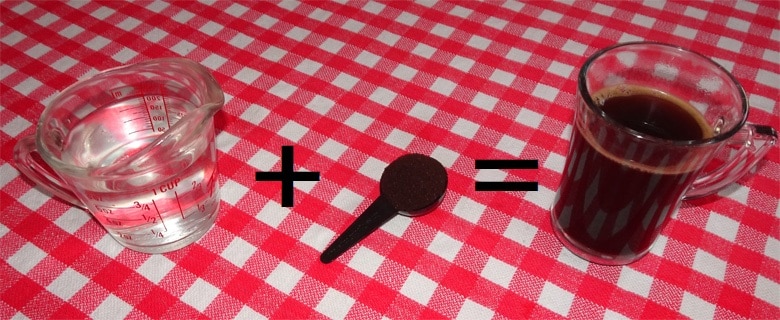
You will need some measuring spoons and a measuring cup. Common coffee measuring spoons are either 15 ml (1 tablespoon) or 30 ml (2 tablespoons). Check the capacity of your tablespoons because not all are the same; the capacity is usually written on the handle of the spoon.
One level tablespoon of coffee weighs approx. 5 g; a heaped tablespoon weighs approx. 7 to 8 g. For the sake of simplicity, let’s agree that we’re using a 5 oz cup (148ml). In this case:
To make a cup of coffee, use one heaped tablespoon of coffee for each cup of water
The above rule of thumb should be good enough if you don’t care much about precision in measurements (that’s ok). But if you’re more like me, then I strongly recommend that you use a scale instead. It will give you more precision and consistency in your coffee so that it’s always exactly the way you like it.
How much coffee should I use for cold brew?
As we mentioned previously, the golden cup ratio of 55 g/L (1:17) works only when brewing coffee with water near the boiling point, which is appropriate when you’re making drip, french press, or pour-over coffee, but not for cold brew.
For cold brew, first you make a coffee concentrate by steeping cold water with coffee for 18 to 24 hours in the refrigerator. This concentrate usually has a ratio of 1:8 to 1:5. Once you’re ready to drink it, you have to dilute this concentrate with more water and ice, usually in a ratio of 1:2. We go into more detail in our post about how to make cold brew coffee.
Does grind size affect coffee strength?
Yes and no. One of the most critical factors in improving coffee quality is having the correct coffee grind, which depends on what type of coffee maker you’re using, and how long is your brew (time of contact between hot water and ground coffee).
A grind that is too coarse diminishes the coffee strength, but you would also be wasting coffee because most of the flavors and aromas would stay inside the bean (and not on your cup). If instead, you use a grind that’s too fine, then you risk making your coffee too bitter, because of over-extraction.
Finding the optimal grinding size often requires some experimentation. You can read more about it in our coffee grinding posts.
So it’s better to dial the strength of your coffee by adjusting how much coffee you use, while keeping the grinding size at the optimal level for your brewing time and method.
Does roast affect coffee strength?
No. Contrary to common belief, a darker roast doesn’t mean stronger coffee. The reason why some people think it does, is because traditional darker roasts are associated with stronger flavors like toast or charcoal. When you use darker roasted beans, you don’t increase the strength of coffee but instead, remove actual coffee flavors and replace them with a general burnt taste.
Choosing the correct coffee to water ratio is just one step in the process of making great coffee
There are six fundamental pillars of coffee preparation, which are:
- Choosing your favorite brewing method and using it correctly
- The correct coffee to water ratio
- An appropriate coffee grind
- Good water (not distilled)
- Correct contact time between coffee grounds and water (brewing time)
- A filtering medium. For example, using a paper filter will produce a different flavor than a mesh filter.
All of the above pillars have an impact on the quality and flavor of the coffee you prepare. But by learning to measure the right amount of coffee and water when making your coffee, you’re already in a much better place towards your journey of finding the perfect coffee cup.
Remember: how you drink your coffee is a personal choice.
We strongly believe that the best way to make coffee is always the one that you prefer. We present the above recommendations for you to use as a starting point. We suggest you try them and then adjust up or down according to your taste. Enjoy your cup of coffee!
Last Updated on June 1, 2023 by Cristina Vélez
